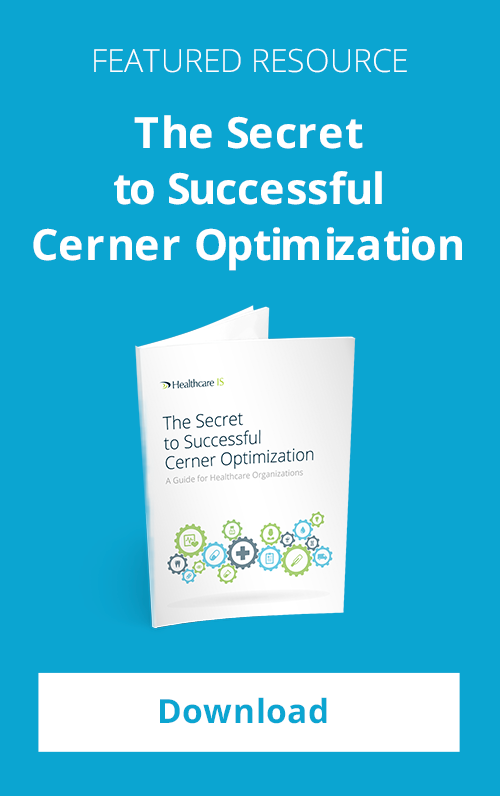Impacts to revenue cycle management (RCM) comprise a frequently overlooked aspect of the EHR platform implementation process, even though this function is directly responsible for an organization’s financial well-being. In order to avoid operational disruptions, hospitals should work to understand the ways in which a new EHR project will connect with the revenue side of the organization.
This is especially true when dealing with integrated solutions like Cerner, in which RCM is combined with EHR and related clinical functions as part of a complete ecosystem. Changes to one part of the equation will have a ripple effect throughout the rest.
As is true for many aspects of an EHR rollout, two of the best ways to improve the likelihood of success are careful planning and inter-departmental coordination. Putting together an information governance team — including representative clinicians, the revenue group, and IT — can help to ensure that the project is inclusive of all perspectives across the organization, while also helping to map out how the concerns of each party will affect the others. For example, the revenue group may have uncovered specific trends in denied claims that could be mitigated by improving a particular element of clinical documentation; likewise, there may be a completely valid reason for the way the clinical team has been doing that documentation. The key is to avoid a siloed approach.
Keeping this in mind, it’s valuable to consider some of the most significant mistakes that organizations often make with RCM in an EHR implementation project. Here are three to avoid:
1. Failure to Outline RCM-Specific Build Milestones
Hospitals often focus on clinical functions when developing their EHR platform builds; unfortunately, they may overlook revenue cycle management until it’s too late. Because many EHR platforms offer integrated solutions, changes to clinical components (or any components outside of RCM) can have a major impact on RCM functionality once you go live. If you begin to move into the production environment without putting time into setting up revenue functions, and then discover you’re missing a physician’s order for billing on the clinical side, you’ll have to add it to the build without being able to effectively test its impact.
If you neglect your RCM component’s development in the testing environment, you may not discover problems like this until it’s too late to change your overall project timeline to address them. As a result, you may find yourself locked into going live with a build that you know will cause RCM issues, unable to make the necessary changes until it’s too late to prevent consequences on the revenue side. Hiccups in billing and revenue functions can create major operational issues if cash on hand is affected.
The key to avoiding this problem is addressing it during the planning and testing phases of your implementation project. Before you can transition from a testing environment to production, you have to ensure your build is at least stable enough that it’s worth copying over. This means that more than 80% of your RCM build should be stable before you start putting it into production and preparing for your go-live date.
2. Failure to Understand That The RCM Benefits of an EHR Platform are Rooted in Integrations with Clinical Functions
One of the major advantages of a fully integrated EHR platform that ties clinical and revenue functions together is the potential streamlining of billing processes. By eliminating time-consuming paperwork and providing a framework for the exchange of information between teams, an EHR platform can potentially help the billing department operate more effectively and reduce the amount of bad debt taken on by a hospital.
In order to capitalize on this potential, it’s essential to understand that the prerequisites for improvements in RCM performance extend deeply into clinical functions. Due to the role played by insurance companies on hospitals’ revenue side, billing is increasingly tied to clinical documentation. A well-implemented platform will include clinical and revenue workflows that allow you to get your pre-authorization and verification ahead of time; this, in turn, can help you to more accurately predict your revenue in regard to insurance reimbursement. It can also eliminate the costs associated with a traditional, multistep billing process that requires staff to track down documentation and seek authorization after services have been rendered.
Failing to include clinicians as part of the RCM component planning process, and vice versa, can lead to a breakdown in communication between these two teams — and this gap may only widen as the build goes on. In an ideal situation, clinical workflows would be designed with some consideration of RCM’s needs, and RCM’s workflows would be built with frontline knowledge from clinical staff. By making sure that both parties are on the same page at the outset, organizations can avoid serious problems and ensure that RCM continues to function well within a fully integrated system.
3. Failure to Ensure That the Right Knowledge and Skill Set Are a Part of Your Implementation Team
Hoping to shift responsibility for planning your implementation entirely onto your EHR platform vendor is an all-too-common mistake. Although the vendor will often provide strong support and expertise along the way, each organization is responsible for identifying and engaging the right blend of resources required to steer an implementation project down the right path.
You must work proactively to ensure that you have a qualified team in place to guide the project planning and implementation in a way that accounts for concerns from across the organization. The specifics of RCM differ from organization to organization, so a one-size-fits-all approach is generally not suitable. Developing a leadership team must start with a self-assessment as to whether your organization has the experienced staff resources to keep the project on track. Many organizations benefit from outside consultants or other third-party support staff who have direct experience with successful EHR-RCM integration.
To find more resources for understanding best practices around EHR platform implementations, contact us today.



Comments